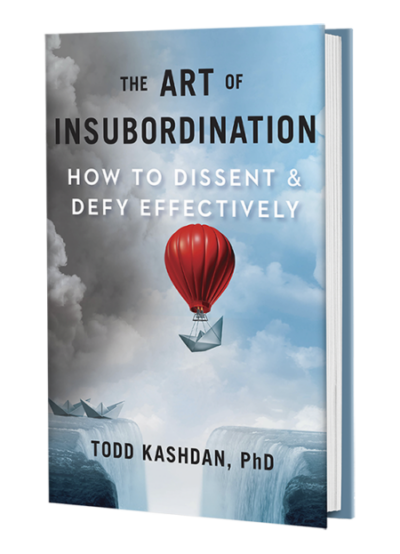
Understanding the psychological conditions that lead to well-being.
We create research for public consumption that directly applies to well-being in daily life and the workplace. Our most pressing missions include: designing interventions for people to be more emotionally agile when confronted with social opportunities and threats, discovering what leads to resilience during and in the aftermath of adversity, and uncovering psychological factors that increase the probability of individual and societal well-being.
High-quality research is about asking interesting questions that are getting insufficient attention and testing them with the best methods possible.
Our Goals
Our team has created new conceptual models of curiosity, purpose in life, and psychological flexibility. To help with program evaluation, we designed widely used multidimensional measures of these psychological strengths and various well-being dimensions. Our research offers a nuanced understanding of human potential, shifting the emphasis from feeling good to doing good. By appreciating the wide range of psychological tools in our arsenal, we can be flexible, capable of fulfillment and success in a wider variety of situations.
- Better understand and facilitate innovation, and civil, open-minded discourse in groups
- Understand how curiosity can be harnessed to improve productivity, creativity, and team performance
- Improve our understanding of well-being and resilience, including how to respond more effectively to positive and negative life events
- Cultivate psychological strengths, at any age
ESSENTIAL PUBLISHED PAPERS
We’ve contributed over 225 scientific articles and counting to the field of Psychology. Here are our top articles. See the full archive
At the core of science is high-quality measurement. We devote great effort to create the best possible innovations in our Well-Being Lab. Our work is used not only by scientists trying to understand human psychology but practitioners, organizations, and policy makers interested in the effectiveness of interventions.





Essential Articles
DOWNLOAD SCALE See the above article with correlates and psychometrics. Stop using the 5DC. The revised scale has stronger psychometrics, each subscale is shorter, and social curiosity has been split into overt and covert dimensions.
Curiosity has comprehensive benefits in the workplace: Developing and validating a multidimensional workplace curiosity scale in United States and German employees. DOWNLOAD SCALE
Essential Articles
Essential Articles
†Goodman, F.R., †Kelso, K., Wiernik, B., & Kashdan, T.B. (in press). Social comparisons and social anxiety in daily life: An experience-sampling approach.
Social anxiety. – Noba Project
The darker side of social anxiety: When aggressive impulsivity prevails over shy inhibition.
All measure here available for free use in science or practice. No need to ask!
Psychological Flexibility
Personalized Psychological Flexibility Index DOWNLOAD
Kashdan, T.B., Disabato, D.J., Goodman, F.R., Doorley, J.D., & McKnight, P.E. (2020). Understanding psychological flexibility: A multimethod exploration of pursuing valued goals despite the presence of distress. Psychological Assessment, 32, 829-850.
Curiosity Scales
The Five-Dimensional Curiosity Scale-Revised (5DCR) DOWNLOAD
Kashdan, T.B., †Disabato, D.J., †Goodman, F.R., & McKnight, P.E. (2021). The Five-Dimensional Curiosity Scale Revised (5DCR): Briefer subscales while separating overt and covert social curiosity. Personality and Individual Differences
Article above with correlates and psychometrics. Stop using the 5DC. The revised scale has stronger psychometrics, each subscale is shorter, and social curiosity has been split into overt and covert dimensions.
The M-Workplace Curiosity Scale DOWNLOAD
Kashdan, T.B., †Goodman, F.R., †Disabato, D.J., McKnight, P.E., †Kelso, K., & Naughton, C. (2021). Curiosity has comprehensive benefits in the workplace: Developing and validating a multidimensional workplace curiosity scale in United States and German employees. Personality and Individual Differences
The Five-Dimensional Curiosity Scale (5DC)
Kashdan, T.B., †Stiksma, M.C.,†Disabato, D., McKnight, P.E., Bekier, J., Kaji, J., & Lazarus, R. (2018). The five-dimensional curiosity scale: Capturing the bandwidth of curiosity and identifying four unique subgroups of curious people. Journal of Research in Personality, 73, 130-149. NOTE: download a copy of the measure here in MSWord.
Curiosity and Exploration Inventory-II
Kashdan, T.B., Gallagher, M.W., Silvia, P.J., Winterstein, B.P., Breen, W.E., Terhar, D., & Steger, M.F. (2009). The Curiosity and Exploration Inventory-II: Development, factor structure, and initial psychometrics. Journal of Research in Personality, 43, 987-998.
Curiosity and Exploration Inventory
Kashdan, T.B., Rose, P., & Fincham, F.D. (2004). Curiosity and exploration: Facilitating positive subjective experiences and personal growth opportunities. Journal of Personality Assessment, 82, 291-305.
Purpose in Life
Everyday effort and progress toward a purpose in life
Kashdan, T.B., & McKnight, P.E. (2013). Commitment to a purpose in life: An antidote to the suffering by individuals with social anxiety disorder. Emotion, 13, 1150-1159. See p.1153
Experiential Avoidance
Momentary experiential avoidance (for experiments or experience sampling studies)
Kashdan, T.B., Goodman, F.R., Machell, K.A., Kleiman, E.M., Monfort, S.S., Ciarrochi, J., & Nezlek, J.B. (2014). A contextual approach to experiential avoidance and social anxiety: Evidence from an experimental interaction and daily interactions of people with social anxiety disorder. Emotion, 14, 769-781.
Evidence for anxiety and experiential avoidance as two separate but related factors for Study 1 can be found on p. 773 of the results. For a replication in Study 2, see Table 3 and on p.9. NOTE: for Table 3, there is an error and the second anxiety item should be: ““I was worried that I would say or do the wrong things.”
First paper that uses the experiential avoidance scale in Kashdan et al. (2014)
Affective Styles Habitual attempts to conceal or suppress affect (Concealing subscale), a general ability to manage, adjust, and work with emotions as needed (Adjusting subscale), and an accepting and tolerant attitude toward emotions (Tolerating subscale).
Hofmann, S.G., & Kashdan, T.B. (2010). The Affective Style Questionnaire: Development and psychometric properties. Journal of Psychopathology and Behavioral Assessment, 32, 255-263.
Personality Strengths
Perceived Benefits and Costs of Romantic Partner Strengths
Kashdan, T.B., Blalock, D.V., Young, K.C., Machell, K.A., Monfort, S.S., McKnight, P.E., & Ferssizidis, P. (in press). Personality strengths in romantic relationships: Measuring perceptions of benefits and costs and their impact on personal and relational well-being. Psychological Assessment
Strength Balance
Young, K.C., Kashdan, T.B., & Macatee, R. (2014). Strength balance and implicit strength measurement: New considerations for research on strengths of character. Journal of Positive Psychology, 10, 17-24. See p. 4 for the operationalization of strength balance
